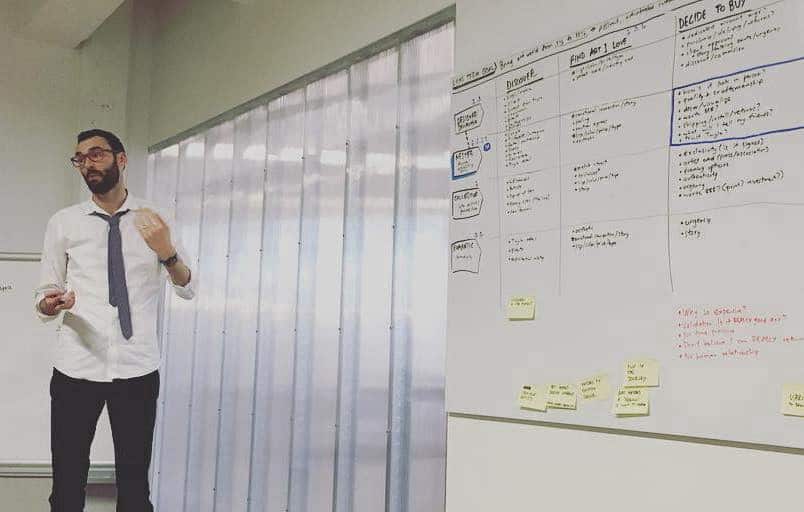What is a Design Sprint Facilitator and why it matters to you
While more and more companies are adopting the Agile methodology and Design Sprints, most companies are still behind. That’s because so many Agile teams lack a Scrum Master and Design Sprints are getting run without a Design Sprint facilitator to ensure that the Sprint is kept on track and supported at every level. If you’re looking to improve efficiency on your digital teams, you need to have a facilitator to usher along your Sprint.

Here are five benefits of a skilled Sprint facilitator:
1. They Keep Information Flowing
Your Design Sprint facilitator is responsible for keeping the Sprint going in the right direction. One of the most ways to do that is through steady and open communication. If your facilitator is doing their job, they’ll be asking tons of questions, writing things down, and keeping a close eye on the clock.
When your facilitator is asking questions, it should be with the intention of getting more information in the open so that everyone is informed. They should be asking follow-up questions and allowing everyone to offer feedback.
Because every Sprint is based around a schedule, your facilitator should be conscious of time. Every step needs to be completed as efficiently as possible so that you don’t fall behind schedule. A good facilitator plays the role of “time cop,” so you don’t have to.

2. They’re Experts at the Sprint Format
Your Sprint facilitator should know the Sprint process like the back of their hand. Before a Sprint begins, the facilitator will help you outline your process and schedule. Even after running hundreds of Sprints, they should follow the same basic structure over and over. Reinventing the wheel is the last thing to do when developing a new project.
When there’s a well-defined structure surrounding a project, you get to start down an unknown path with a few helpful boundaries or guardrails. While there’s no telling what’s ahead of you, knowing that you’re following a structure that has worked for so many companies will give you confidence.

3. They Help Get Everyone Onboard
When working on a Sprint, you need everyone on the team on board with the process; everyone needs to be present and engaged. If there are people coming and going from your meetings, the Sprint will not flow as it should.
Your facilitator can be a cheerleader for your project as well as the wrangler for the talent on your team. Just as they play “time cop,” an outside facilitator also has the authority to hold your team accountable for showing up and staying present.

4. They Help Define Roles and Responsibilities
Sprints are easier for everyone to understand when your facilitator has done the work to let everyone know their role. Knowing where you fit in and how your work helps others is the best way to build accountability within a team. Without accountability, it’s hard to get everyone to agree on what they need to do.
Ensure that your facilitator explains everything to your team before the Sprint. Pre-reading or homework on the Sprint process is sometimes necessary to ensure that everyone knows what to expect.
At the start of every day, the facilitator should hold a short scrum to remind them of each day’s goals. While these can seem redundant at first, trends will emerge and everyone gets the chance to claim a task. If designing one element is taking longer than it should, people can step in to help out stuck team members.

5. They Ask Without Delegating
In the course of a Sprint, people know their general role and what they should be working on. Along the way, they’ll serve themselves and take on what they can. When other team members are drowning in work, everyone will know because of daily meetings.
At the start of each day, when the agenda or plan is outlined, the facilitator should ask the team if it sounds okay to them. This gives them an opportunity to speak up. Agreeing and consenting to the work ahead of you lets you take more ownership. When work is handed down, the person working on the project feels alienated from the task ahead. When the facilitator asks how they feel about it, they get the chance to say yes or ask more questions.
Conclusion: A Design Sprint Facilitator isn’t a Manager
A design sprint facilitator manages one thing if anything at all: the focus and momentum of your sprint. In a number of companies, Sprint facilitation rotates between senior designers and staff members. This gives everyone a better understanding of what it takes to keep a sprint going and how to look at the process differently.
To ensure your process is ready for this kind of innovation, check out our latest guide.




